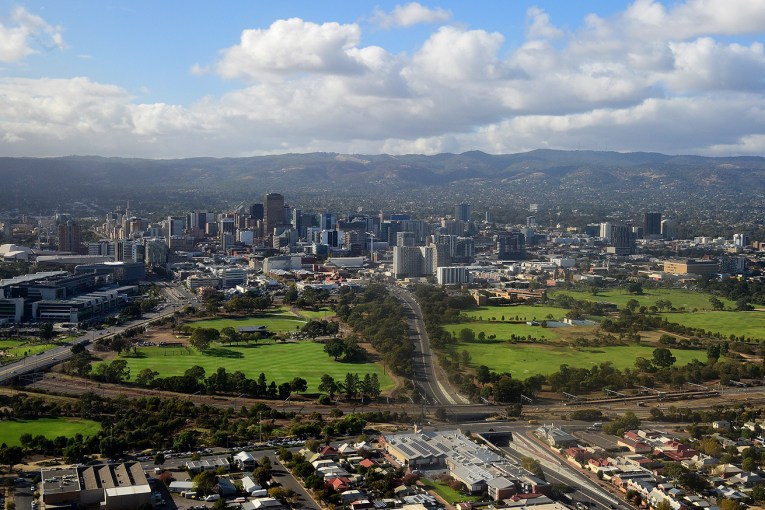Comment: An interest rate lull before a stormy 2016


The Reserve Bank’s decision to leave interest rates on hold at its December meeting was no surprise, but looking ahead there could be a few shocks in store for 2016.
That’s because the RBA’s wait-and-see approach to monetary policy is waiting for some pretty specific things.
The first, arriving on December 16, is the US Federal Reserve’s decision on its own federal funds rate – it hinted at its last meeting that raising rates was a “live” option in December.
• Turkey shot jet to protect oil: Putin
• PM to boost climate investment
• ANZ website suffers lengthy outage
If it bumps its target rate up by a modest 25 basis points, it will be a historic turning point for the global economy, which was so badly affected by bursting credit bubble of the the global financial crisis.

The Federal Reserve: rates call due Dec 16.
Market traders are pricing the probability of a US rate hike at 74 per cent, and if that view is correct, a very small tightening of monetary policy in the US will have large consequences abroad.
The Australian dollar would likely weaken further against the greenback, meaning exports such as beef and car components would become cheaper for Americans – great news for export volumes in those sectors.
Australia has long been a bit of casino for currency traders and foreign equity buyers, so unpredictable capital flows out of the country could weaken the dollar further than expected, and hit Australian shares even harder.
However, recent experience has demonstrated just how unpredictable such moves can be – a few months back many commentators expected the Aussie dollar, now trading at 73 US cents, to be closer to 65 cents.
China fears
The second big shock of 2016 could come from China doing substantially better, or more likely worse, than assumed in the current federal budget (or the mid-year budget update, which is usually released in December but can go as late as the end of Janaury).
A weakening of Chinese demand for Australian resources would hammer the ASX even further and slash government tax receipts.
But will that happen? That depends to a large extent on the eurozone, which as a bloc is China’s biggest export customer.

China exports rely heavily on Europe.
If, as many now expect, the European Central Bank launches further stimulus measures, European orders for Chinese goods could lift and in time filter through to the Australia economy.
And the third big shock could come by a re-rating of Australia vis-à-vis our near-neighbours.
At present, the Aussie dollar has held up pretty well against the South East and East Asian currencies (though not the yuan, which is closely pegged to the US dollar).
What could precipitate that? The current fears are of a post-Fed-hike capital flight from some of our poorer neighbours, which might offer us some bargain imports, but would harm their economies and their ability to be good export customers for Australia.
A hit from housing
On the other hand, it could be Australia that weakens due to domestic factors – the biggest domestic threat being the housing market.
Household debt in Australia has never been higher, and our monstrous private debts are mostly secured against a somewhat shaky housing market .
If that house of cards fell, we’d be in a world of trouble – which is why APRA has taken fairly strong action in the past year to shore up the banking/housing sector.

House of cards: private debt is at record levels.
The worst case scenario for Australia is further falls in commodity prices driven by a China slowdown, coupled with accelerating job losses in mining and auto manufacturing, and exacerbated by a ravaged federal budget, tumbling housing market and imported inflation via a too-weak dollar.
Yep, that’s the worst. And the RBA would be cutting its last 200 basis points of cash-rate as fast as it could.
A better outlook
But hey, let’s think positive!
Jobs growth has, so far, been better than expected. House prices have, so far, held up pretty well. Equities, though dipping below the 5000 mark on the S&P 200 index, have inched back up.
Manufacturing has been expanding for five months and there’s growing evidence of stronger exports on the way in agriculture and advanced manufacturing, thanks to forthcoming free-trade agreement tariff cuts by some of our trading partners.
If those processes continue, and if the tailing off of activity in the mining and construction sectors can be absorbed elsewhere, it is feasible that the RBA will not cut rates further in 2016 – indeed, the latest survey of economists by AAP showed only six out of 13 expected further cuts next year.
One might even dare to dream of a rate increase in 12 months time. That would indicate that the Australia economy had finished its six-year recovery from the GFC meltdown, and was ready to innovate, invest and begin fighting its way back to world-leading prosperity.
So no rate cut today, probably no cuts in the months again, and just the faintest vision of rate hikes a year or more out – at least that’s how it looks until any of the shocks above come to pass.








